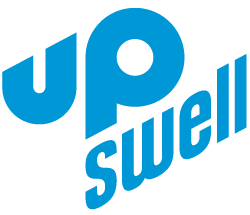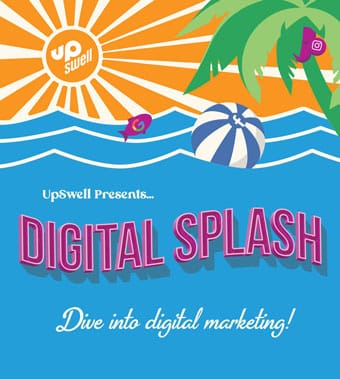When it comes to direct mail marketing, the question most businesses ask is: What kind of response can I expect? The short answer: average direct mail response rates range from 0.5% to 2%, but with the right strategy, you can see rates as high as 5% or more, especially when targeting a well-defined list with an appealing offer.
Let’s dig deeper into the numbers, how they vary by industry, and—more importantly—how to improve direct mail response rates to maximize your ROI.
What Is a Direct Mail Response Rate?
A direct mail response rate is the percentage of recipients who respond to your mailing. For example, if you send out 5,000 postcards and receive 100 responses, your response rate is 2%.
But that’s just a baseline. The direct mail success rate depends on several variables, including the type of mailer you use, the quality of your list, your industry, your offer, and how easy it is for someone to respond.
Average Direct Mail Response Rates (And Why They Vary)
A general rule of thumb:
- Cold list mailings (people unfamiliar with your business): 0.5%–1%
- House list mailings (past customers or known leads): 2%–5%+
- Highly targeted campaigns with a strong offer: 5%–9%
In most cases, direct mail outperforms digital channels like email and paid search in response rates. That’s because physical mail feels more personal and less cluttered than the digital inbox.
Direct Mail Response Rates by Industry
Direct mail isn’t a one-size-fits-all solution. Some industries see significantly better results based on how urgent, personal, or essential their services are.
Here’s a general look at direct mail response rates by industry:
- Healthcare & Dental: Often 3%–5% response, especially when promoting free consultations or checkups.
- Fitness & Gyms: 2%–4% is common for time-sensitive promotions. Weekly mailers work well for engagement.
- Home Services: Roofing, HVAC, and cleaning services often see 1%–3% responses, especially in seasonal campaigns.
- Education: Local private schools and enrichment programs can hit 2%–6%, particularly with personalized letter mailers.
- Retail & Restaurants: High-impact offers, like gift cards or coupons, can push responses over 4%.
Need something industry-specific? You can even design your own mailer to better target your audience.
What Affects Your Direct Mail Success Rate?
Several elements impact your direct mail response rate. Here are the major ones:
- Mailing List Quality: The better you know your audience, the higher your response rate. House lists outperform rented lists every time.
- Offer Strength: A compelling offer (e.g., “Free First Visit” or “$25 Gift Card”) drives higher action than vague messaging.
- Format: Postcards offer a lower cost per piece and are easy to scan. Letters, on the other hand, feel more private and are ideal for more serious or detailed messaging.
- Design & Personalization: Eye-catching designs and personalized names or offers increase engagement.
- Timing & Frequency: Repetition builds trust. Most businesses see better results by mailing multiple times. Try weekly mailings to stay top-of-mind.
- Call to Action (CTA): Make it clear what the recipient should do next—whether that’s visiting a website, calling a number, or bringing in a coupon.
How to Improve Direct Mail Response Rates
If you’re seeing average results, here are a few ways to push your direct mail success rate higher:
1. Segment Your List
Group your audience by demographics, purchase history, or location. Tailor the message for each segment. A gym prospect doesn’t want the same message as a current member.
2. Track Everything
Use promo codes, custom phone numbers, or trackable URLs. You’ll learn what’s working and what isn’t—so you can double down on high-performers.
3. Use Strong Offers
Offers drive action. Discounts, free trials, gift cards, and time-limited deals create urgency. Plastic mailers are perfect for this.
4. Personalize the Message
From using the recipient’s name to referencing their last visit, personalization boosts engagement. Even just printing “Our Offer to [First Name]” can make a difference.
5. Choose the Right Format
Match your format to your message:
- Postcards for brand awareness and simple offers. View options
- Letters for private, detailed messages.
- Newsletters for ongoing education and engagement.
6. Clean Up Your List
Use tools like the National Change of Address (NCOA) registry to ensure your mail reaches the right person.
7. Be Consistent
One mailer is easy to ignore. Three mailers over a few weeks build recognition. Automate your outreach to stay top-of-mind.
Response Rate vs. Conversion Rate
A 2% response rate doesn’t mean 2% of people become customers. It means they took action—visited your site, scanned your QR code, or called. But what really matters is what happens next.
Sometimes, a lower response rate leads to a higher conversion rate. For example:
- Mailing 10,000 postcards
- Campaign A: 2% response rate (200 responses), 5% conversion = 10 sales
- Campaign B: 1% response rate (100 responses), 30% conversion = 30 sales
- Campaign A: 2% response rate (200 responses), 5% conversion = 10 sales
Always track conversions, not just responses.
What Does It Cost to Get That Response?
Let’s say you mail 10,000 pieces:
- Postcards: $0.50 per piece = $5,000 total
- Letters: $1.50 per piece = $15,000 total
Both campaigns get 1% response (100 responses). That’s:
- Postcard cost per response: $50
- Letter cost per response: $150
While letters may convert better, it’s worth weighing the cost against results.
Maximize Your Direct Mail Response Rates with the Right Strategy
Direct mail isn’t dead, and when done right, it still delivers some of the highest response rates in marketing today. Whether you’re mailing postcards, newsletters, or high-impact gift card mailers, the key to success lies in strategy, audience targeting, creative execution, and consistent tracking.
Understanding your direct mail response rates by industry gives you a clear benchmark to work from, and applying proven tactics helps improve your returns over time.
Ready to make direct mail a profit-driving part of your marketing mix? Partner with a team that knows how to deliver results. Explore our direct mail solutions and take the next step toward higher response rates and real business growth.









